What are Texas Master Naturalists?
Texas Master Naturalists are volunteers with the interest and desire to give back to their community and willingness to attend the training.
How do I become a Texas Master Naturalist?
 To become a certified Texas Master Naturalist, you must complete a minimum of 40 hours training on the region’s natural features and the impact that people have on nature. Training courses are held in the winter/spring of each year and average about 20 students. The course includes presentations by biologists, geologists, naturalists, and others from local, state, and federal agencies and universities. You must also complete a minimum of 40 hours of volunteer service and 8 hours of advanced training during the first 12 months following your completion of the course (to be completed before your course’s graduation anniversary date). Advanced training enables Texas Master Naturalists to gain additional knowledge or learn a particular skill in order to assist with different volunteer projects. Advanced training activities in the past have involved hands-on instruction, field trips to local natural areas, and lectures on a variety of topics. All of the volunteer service and advanced training activities must be approved by the chapter board of directors and you must report your hours to get credit. Once you meet these requirements, you will receive certification as a Texas Master Naturalist.
To become a certified Texas Master Naturalist, you must complete a minimum of 40 hours training on the region’s natural features and the impact that people have on nature. Training courses are held in the winter/spring of each year and average about 20 students. The course includes presentations by biologists, geologists, naturalists, and others from local, state, and federal agencies and universities. You must also complete a minimum of 40 hours of volunteer service and 8 hours of advanced training during the first 12 months following your completion of the course (to be completed before your course’s graduation anniversary date). Advanced training enables Texas Master Naturalists to gain additional knowledge or learn a particular skill in order to assist with different volunteer projects. Advanced training activities in the past have involved hands-on instruction, field trips to local natural areas, and lectures on a variety of topics. All of the volunteer service and advanced training activities must be approved by the chapter board of directors and you must report your hours to get credit. Once you meet these requirements, you will receive certification as a Texas Master Naturalist.
Visit our Basic Training page to learn more about upcoming training and how to register.
As a certified Master Naturalist, what would I do?
 Volunteer projects are diverse and might include construction and maintenance of interpretive trails; stream banks, marsh or prairie restorations; exotic species control; fish, wildlife and plant inventories; songbird nest box trails; natural resource youth camps; school programs; programs to community groups; landowner consultation; outdoor skill instruction; natural resource interpretation at nature and visitor centers; creating and maintaining naturescaping demonstration areas; and more.
Volunteer projects are diverse and might include construction and maintenance of interpretive trails; stream banks, marsh or prairie restorations; exotic species control; fish, wildlife and plant inventories; songbird nest box trails; natural resource youth camps; school programs; programs to community groups; landowner consultation; outdoor skill instruction; natural resource interpretation at nature and visitor centers; creating and maintaining naturescaping demonstration areas; and more.
What are my responsibilities as a certified Master Naturalist?
Once you are certified, it is your responsibility to maintain your certification. You are expected to stay active in the local Chapter and attend meetings, take advantage of advanced training offered through the local chapter, and keep accurate records of your service hours. As a volunteer, you may not profit from your status or violate the policies, missions and goals of the sponsoring agencies that govern use of the Master Naturalist title.
When and where are the chapter meetings?
The Lost Pines Chapter holds regular meetings on the 3rd Monday of each month at 6:30 p.m. Meetings are held in various venues in Bastrop and Caldwell counties and are announced well in advance on Meetup. You can join our Meetup group, which will provide timely notification of chapter meetings, volunteer opportunities and advanced training opportunities.
What is a volunteer chapter?
Master Naturalist volunteers in a community organize into self-governing chapters, with partner/agency staff serving as chapter advisors.
Who administers the program?
The Texas Master Naturalist program is a partnership of the Texas AgriLife Extension Service, Texas Parks and Wildlife and local partners in each community.
How is the program supported?
This is a self-supporting program. Volunteers are expected to pay to cover the costs of their training. Local chapters are supported by training fees, chapter dues, and donations (money or in-kind services such as free meeting space) from local partners. A portion of the training fees and chapter dues are also used to support statewide administration of the program. The local training fees and dues are set by the local coordinating committee and take into account the state fees.


